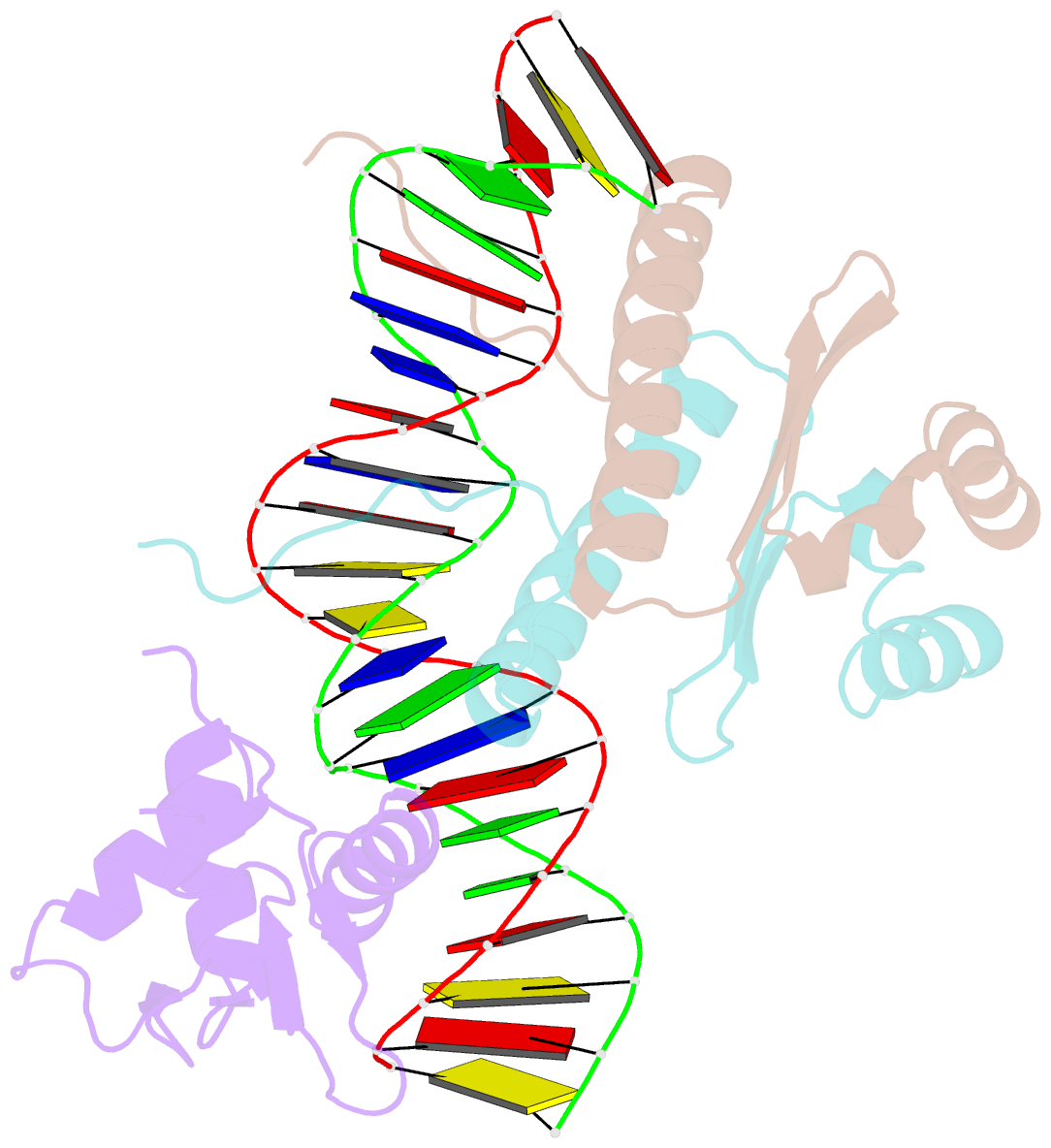Summary information and primary citation
- PDB-id
- 1k6o; SNAP-derived features in text and JSON formats;
DNAproDB
- Class
- transcription-DNA
- Method
- X-ray (3.19 Å)
- Summary
- Crystal structure of a ternary sap-1-srf-c-fos sre DNA complex
- Reference
- Mo Y, Ho W, Johnston K, Marmorstein R (2001): "Crystal structure of a ternary SAP-1/SRF/c-fos SRE DNA complex." J.Mol.Biol., 314, 495-506. doi: 10.1006/jmbi.2001.5138.
- Abstract
- Combinatorial DNA binding by proteins for promoter-specific gene activation is a common mode of DNA regulation in eukaryotic organisms, and occurs at the promoter of the c-fos proto-oncogene. The c-fos promoter contains a serum response element (SRE) that mediates ternary complex formation with the Ets proteins SAP-1 or Elk-1 and the MADS-box protein, serum response factor (SRF). Here, we report the crystal structure of a ternary SAP-1/SRF/c-fos SRE DNA complex containing the minimal DNA-binding domains of each protein. The structure of the complex reveals that the SAP-1 monomer and SRF dimer are bound on opposite faces of the DNA, and that the DNA recognition helix of SAP-1 makes direct contact with the DNA recognition helix of one of the two SRF subunits. These interactions facilitate an 82 degrees DNA bend around SRF and a modulation of protein-DNA contacts by each protein when compared to each of the binary DNA complexes. A comparison with a recently determined complex containing SRF, an idealized DNA site, and a SAP-1 fragment containing a SRF-interacting B-box region, shows a similar overall architecture but also shows important differences. Specifically, the comparison suggests that the B-box region of the Ets protein does not significantly influence DNA recognition by either of the proteins, and that the sequence of the DNA target effects the way in which the two proteins cooperate for DNA recognition. These studies have implications for how DNA-bound SRF may modulate the DNA-binding properties of other Ets proteins such as Elk-1, and for how other Ets proteins may modulate the DNA-binding properties of other DNA-bound accessory factors to facilitate promoter-specific transcriptional responses.





